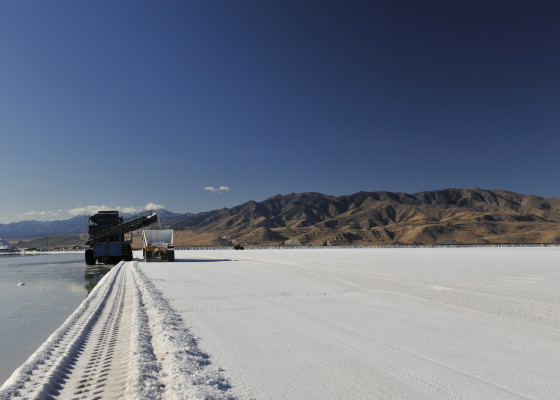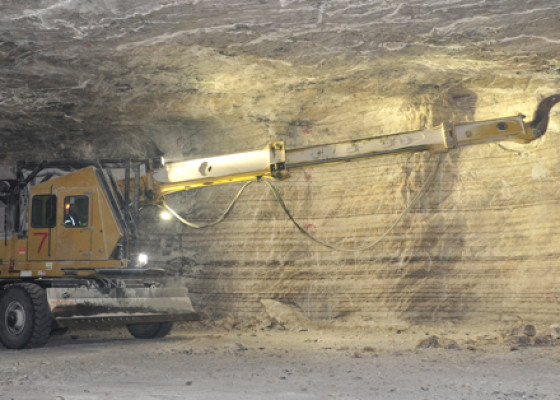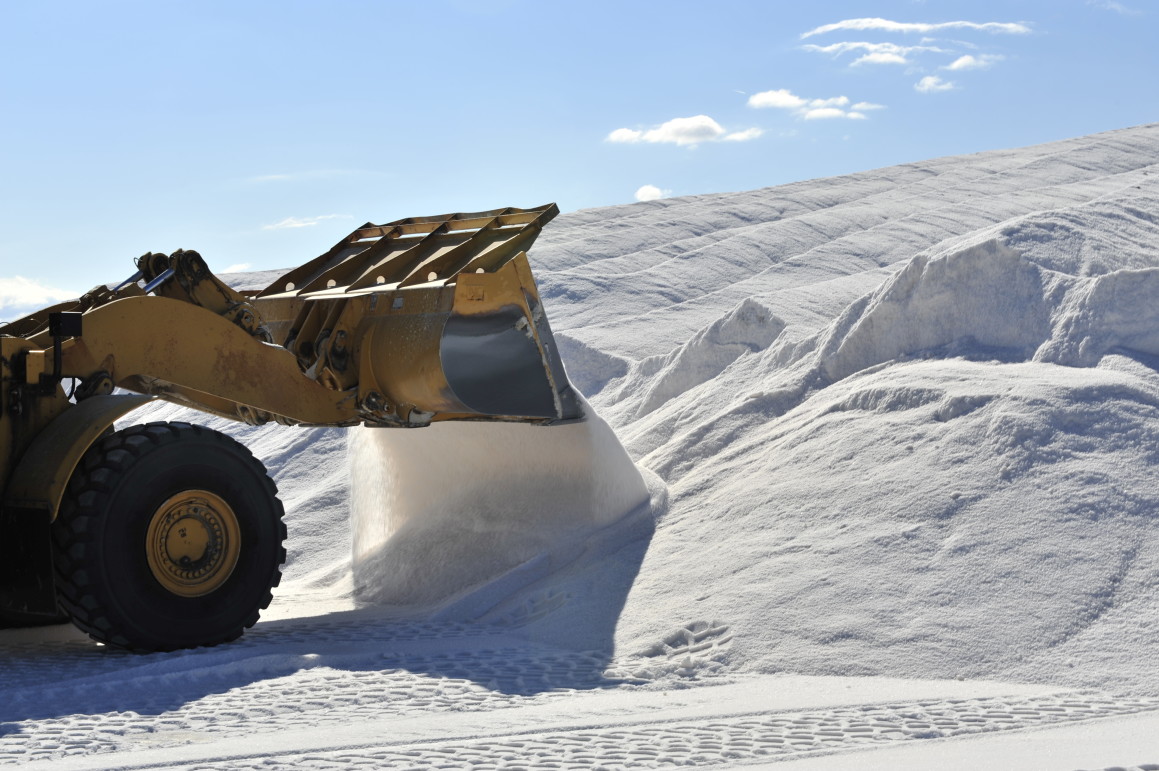Solar Evaporation Method
This is the oldest method of salt production. It has been used since salt crystals were first noticed in trapped pools of sea water. Its use is practical only in warm climates where the evaporation rate exceeds the precipitation rate, either annually or for extended periods, and ideally, where there are steady prevailing winds. Solar salt production is, typically, the capturing of salt water in shallow ponds where the sun evaporates most of the water. The concentrated brine precipitates the salt which is then gathered by mechanical harvesting machines. Any impurities that may be present in the brine are drained off and discarded prior to harvesting.

Usually two types of ponds are used. First is the concentrating pond, where the salty water from the ocean or salt lake is concentrated. The second is called the crystallizing pond, where the salt is actually produced.
Crystallizing ponds range from to 40 to 200 acres with a foot-thick floor of salt resulting from years of depositions. During the salt-making season of four to five months, brine flows continuously through these ponds. This is a saturated brine solution, containing as much salt as it can hold, so pure salt crystallizes out of the solution as the water evaporates. Natural chemical impurities are returned to the salt water source.
Rock Salt Mining Method
Morton also uses the second oldest method of producing salt – underground mining. This is probably the most dramatic method of gathering salt. Large machines travel through vast cave-like passageways performing various operations.
Salt mines are among the safest of mines. They are also the most comfortable to work in. While mine temperature varies with depth, the average temperature remains about 70° F year round.

Salt may appear in veins, as does coal. Veins are the original bedded salt deposits. Salt also may be found in domes, which were formed when Earth pressures forced salt up through cracks in the bedrock from depths as great as 30,000 or 40,000 feet; they resemble plugs of almost-circular shape a few hundred yards to a mile across. Some domes occur close to the surface. Both domes and veins are mined in a similar way. Most domes in North America are located in the south from Alabama to Texas with many out under water in the Gulf of Mexico.
To enter a salt mine, miners go down a shaft from the Earth’s surface to the salt bed. There are two shafts in each Morton mine – one for personnel and one to lower materials and equipment into the mine, as well as to hoist the mined rock salt to the surface. The shafts also are used to deliver a constant supply of fresh air to the miners while they work hundreds to thousands of feet below the surface. Most mine shafts are lined with a concrete wall called a shaft liner.
Salt is mined by the room and pillar method. It is removed in a checkerboard pattern to leave permanent, solid salt pillars for mine roof support. Usually 45 to 65 percent of the salt is removed. The room height may average 18 feet in a bedded deposit to 100 feet in a dome mine.
Normally, the first operation is undercutting. Large machines cut a slot 10 or more feet in depth across the bottom of a solid salt wall. This leaves a smooth floor for picking up the salt after blasting.
Next, small holes are drilled into the salt wall to a depth of 10 or more feet and explosives are loaded into the drilled holes. After the work shift, the explosives are set off electrically. Several hundred to several thousand tons of rock salt are blasted and fall onto the mine floor.
Equipment is used to load and haul the salt to machines that crush and feed the salt onto a conveyor belt. The lumps are conveyed to a series of stations for crushing and additional sizing of the lumps. The salt is then placed in a storage bin to await hoisting to the surface.
The above ground processing of the rock salt consists of screening the mined salt into various marketable sizes by sorting through mechanically operated screens. When separated, each size is conveyed to its individual storage bin to await packaging for shipment or to be loaded as bulk salt into railroad cars, trucks, river barges or lake boats for shipment to customers.

Vacuum Evaporation Method
Another method of salt production used by Morton Salt is the evaporation of salt brine by steam heat in large commercial evaporators, called vacuum pans. This method yields a very high purity salt, fine in texture, and principally used in those applications requiring the highest quality salt.
The first part of the operation is known as solution mining. Wells are drilled from several hundred to 1,000 feet apart into the salt deposit. These wells are connected via lateral drilling, a recently developed technology. Once the wells are connected, the solution mining operation begins: water is pumped down one well, the salt below is dissolved, and the resulting brine is forced to the surface through the other well. It is then piped into large tanks for storage.
Next, the brine is pumped into vacuum pans. These are huge closed vessels under vacuum about three stories high. They are normally arranged in a series of three, four or five, with each one in the line under greater vacuum than the preceding one. This series of vacuum pans operates on a very simple principle: Whenever pressure is lowered, the temperature at which water will boil is also lowered. For instance, under normal air pressure at sea level, water boils at 212°F. But at ten thousand feet above sea level, where air pressure is much less, water boils at 194°F. Vacuum pans may operate at as low as 100°F.
In the vacuum pan process, steam is fed to the first pan. This causes the brine in the pan to boil. The steam from the boiling brine is then used to heat the brine in the second pan. The pressure in the second pan is lower, allowing the steam made by the boiling in the first pan to boil the brine in the second pan. The pressure is reduced still further in each succeeding pan. This allows the steam made by the boiling brine in the previous pan to boil the brine in the next pan. While the boiling operation could be done with just one pan, several pans in a row produce more salt per pound of steam, thus allowing greater energy efficiency.
